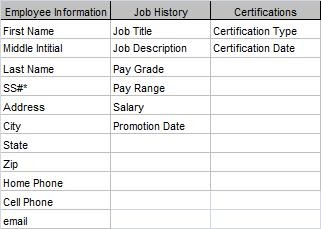Tarvalon14
New Member
- Joined
- Nov 3, 2022
- Messages
- 7
- Office Version
- 2019
- Platform
- Windows
Hi all,
I need a query that searches an Employee ID and a charge code they are supposed to be charging (EmployeeList Table) and compares it to the Employee ID and the charge code they are actually charging (EmployeeTimesheets Table) and return the unmatched results. (I need to know if they charged the incorrect code) The issue is, on EmployeeList, the straight time and overtime codes are separate fields. On EmployeeTimesheets, they are combined in one field "PA Cost Category ID." Below is a screenshot of my attempt at creating the relationships. Can you please help me build this query? The wizard is not getting me the results I need. It keeps filling in the OT field as "is null." I used to be able to rock and roll in this stuff but that was well over a decade ago. (
(
Thanks in advance.

I need a query that searches an Employee ID and a charge code they are supposed to be charging (EmployeeList Table) and compares it to the Employee ID and the charge code they are actually charging (EmployeeTimesheets Table) and return the unmatched results. (I need to know if they charged the incorrect code) The issue is, on EmployeeList, the straight time and overtime codes are separate fields. On EmployeeTimesheets, they are combined in one field "PA Cost Category ID." Below is a screenshot of my attempt at creating the relationships. Can you please help me build this query? The wizard is not getting me the results I need. It keeps filling in the OT field as "is null." I used to be able to rock and roll in this stuff but that was well over a decade ago.
Thanks in advance.








